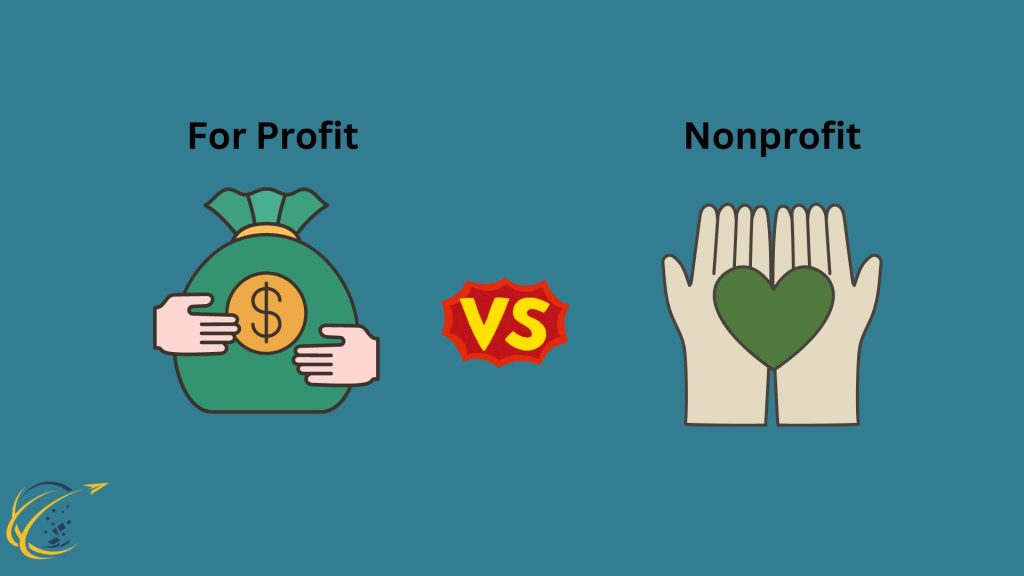When choosing between a for-profit and a nonprofit business model, it’s crucial to understand the fundamental distinctions. The debate of For Profit versus Nonprofit is not merely about financial gain versus philanthropy. Instead, it encompasses legal structures, tax implications, revenue generation, and organizational goals. By comparing these two models, businesses and entrepreneurs can make informed decisions about which framework aligns with their vision and mission.
Core Mission and Purpose
At the heart of the For Profit versus Nonprofit distinction lies the organization’s mission. A for-profit company exists primarily to generate profits for its owners or shareholders. This focus drives business decisions and revenue strategies. Whether it’s offering products or services, the main goal of a for-profit company is to maximize returns for investors while maintaining profitability.
Nonprofits, however, exist to serve a charitable, educational, or community-focused mission. These organizations aim to create positive social impact rather than generate profit. Revenue generated by a nonprofit is reinvested into its mission and programs, ensuring that resources are directed toward benefiting society. Nonprofits do not have shareholders, and any excess income is used to further their cause rather than being distributed as profits.
The different purposes of for-profit and nonprofit organizations shape their decision-making processes. While both models strive for sustainability, for-profits focus on profit margins and market share, whereas nonprofits prioritize fulfilling their mission.
Tax Status and Legal Structures
One of the major differences between For Profit versus Nonprofit organizations is their tax status. For-profit businesses are required to pay income taxes on their profits at both the state and federal levels. These companies also have more flexibility in how they manage and distribute their earnings, whether to reinvest in the business or distribute dividends to shareholders.
Nonprofits, on the other hand, can apply for tax-exempt status under Section 501(c)(3) of the Internal Revenue Code in the U.S. This allows them to avoid paying federal income tax, and in many cases, they are also exempt from state and local taxes. Additionally, donors to 501(c)(3) organizations can deduct their contributions on their personal taxes, creating an incentive for charitable giving. However, to maintain this tax-exempt status, nonprofits must adhere to strict regulations, including limitations on political activity and the requirement to reinvest all earnings into their mission.
Nonprofits must also adhere to governance structures that typically include a board of directors, which oversees the organization’s activities. This board is responsible for ensuring that the nonprofit operates in a manner consistent with its stated mission and complies with legal requirements. For-profit businesses, by contrast, may be structured as sole proprietorships, partnerships, or corporations, each with different levels of governance and regulatory requirements.
Revenue Generation and Funding
Revenue generation is another key distinction in the For Profit versus Nonprofit comparison. For-profit businesses can generate revenue through various means, including sales, investments, and services. They can seek venture capital, issue stocks, and offer dividends to investors. For-profit businesses have broad access to capital markets and can reinvest earnings into expanding their operations.
Nonprofits, however, rely on a different set of revenue streams. These organizations often depend on donations, grants, and fundraising events to fund their operations. While some nonprofits generate income through services or products, most depend heavily on philanthropic contributions and government funding. Nonprofits must maintain transparency in how funds are used, with donors and grant-makers expecting regular updates on the impact of their contributions. Because nonprofits do not distribute profits, they must carefully balance revenue with program expenses to ensure long-term sustainability.
Measuring Success
For Profit versus Nonprofit organizations also differ in how they measure success. For-profit businesses typically gauge success based on financial metrics, such as revenue growth, profit margins, and shareholder returns. Business performance is evaluated based on profitability and market expansion, with a focus on delivering value to customers and increasing the company’s bottom line.
In contrast, nonprofits measure success through their impact on society. The organization measures success by how well it achieves its mission and serves its constituents. Leaders assess a nonprofit’s effectiveness by tracking metrics like the number of people helped, improvement in social conditions, or environmental protection. While nonprofits value financial stability, they ultimately measure success by social outcomes rather than financial profits.
Governance and Accountability
Governance structures differ significantly between for-profit and nonprofit organizations. For-profits typically operate with a leadership team and shareholders who may influence decision-making through voting or investments. Shareholders and owners are concerned with financial performance, and management teams are responsible for ensuring profitability and growth.
A board of directors or trustees governs nonprofits, providing oversight and accountability. This board is responsible for safeguarding the nonprofit’s mission and ensuring that the organization complies with legal requirements. The board also monitors the organization’s financial health and strategic direction. Unlike for-profit companies, which prioritize profit for shareholders, nonprofits are accountable to their donors, beneficiaries, and the broader public.
Social Responsibility and Impact
While both for-profit and nonprofit organizations can practice social responsibility, their approaches differ significantly. For-profit companies often adopt corporate social responsibility (CSR) to improve their brand, engage customers, and tackle societal issues. Their CSR initiatives may include charitable donations or sustainability efforts, but profitability remains the core goal.
Nonprofits, however, focus solely on creating social impact. Every decision supports their mission, and their resources go toward serving the public good. Nonprofits address societal challenges like education, healthcare, and environmental conservation, measuring success by the impact they make.
The “For Profit versus Nonprofit” distinction lies in purpose, structure, and operations. For-profit businesses aim to increase revenue and market share, while nonprofits prioritize serving a mission and creating social change. Both are crucial for society and can collaborate to achieve mutual goals. Leaders who understand these differences can choose the best model to meet their organizational objectives.


